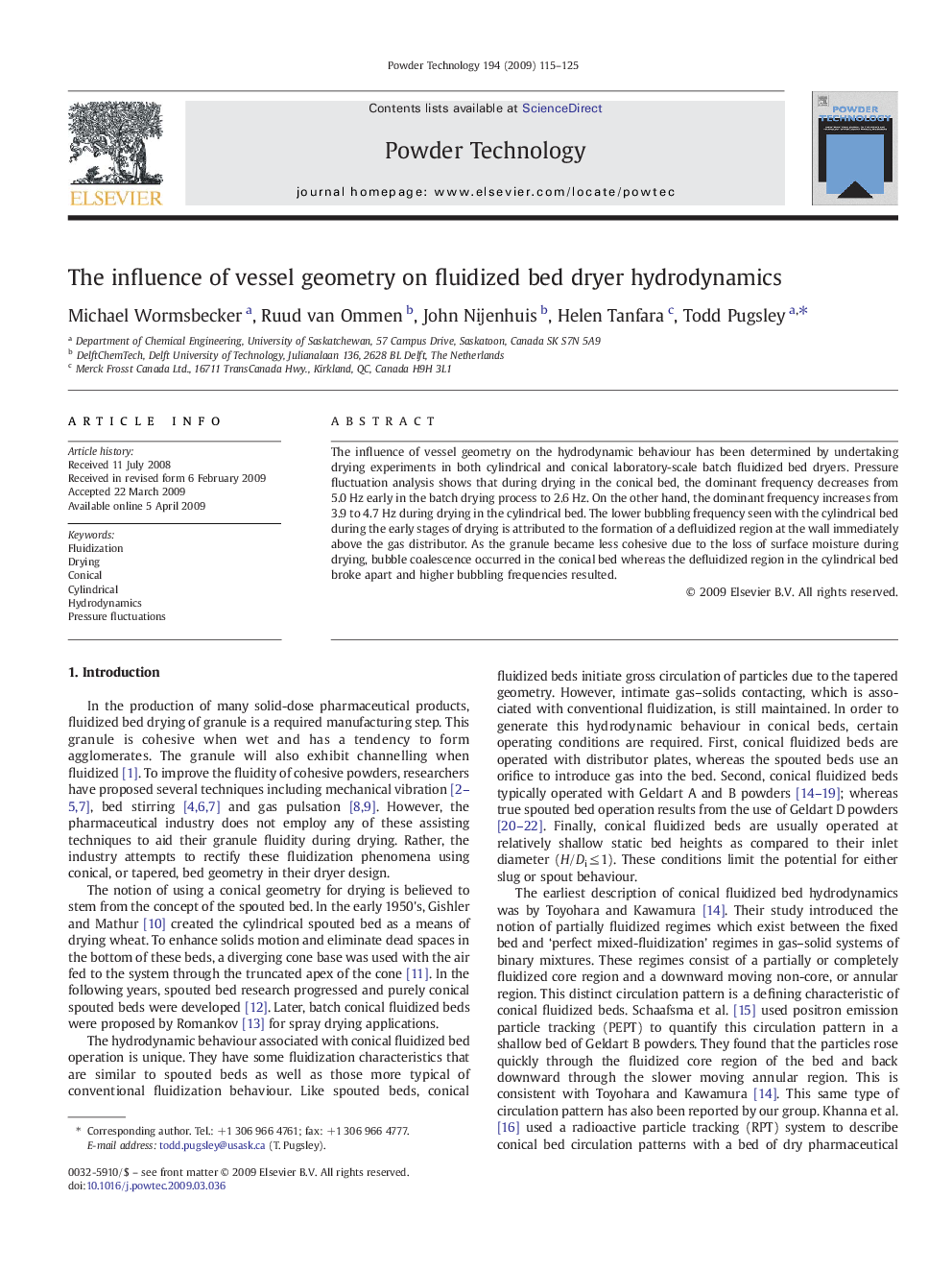| Article ID | Journal | Published Year | Pages | File Type |
|---|---|---|---|---|
| 238547 | Powder Technology | 2009 | 11 Pages |
The influence of vessel geometry on the hydrodynamic behaviour has been determined by undertaking drying experiments in both cylindrical and conical laboratory-scale batch fluidized bed dryers. Pressure fluctuation analysis shows that during drying in the conical bed, the dominant frequency decreases from 5.0 Hz early in the batch drying process to 2.6 Hz. On the other hand, the dominant frequency increases from 3.9 to 4.7 Hz during drying in the cylindrical bed. The lower bubbling frequency seen with the cylindrical bed during the early stages of drying is attributed to the formation of a defluidized region at the wall immediately above the gas distributor. As the granule became less cohesive due to the loss of surface moisture during drying, bubble coalescence occurred in the conical bed whereas the defluidized region in the cylindrical bed broke apart and higher bubbling frequencies resulted.
Graphical abstractIn this study, pharmaceutical granule was dried in both conical and cylindrical fluidized bed dryers. Centralized bubbling, with a distinct downward circulation of solids at the walls, existed with both geometries prior to the critical moisture content (Qcrit). Beyond Qcrit, higher frequency bubbling developed in the cylindrical bed whereas bubble coalescence increased in the conical bed.Figure optionsDownload full-size imageDownload as PowerPoint slide
